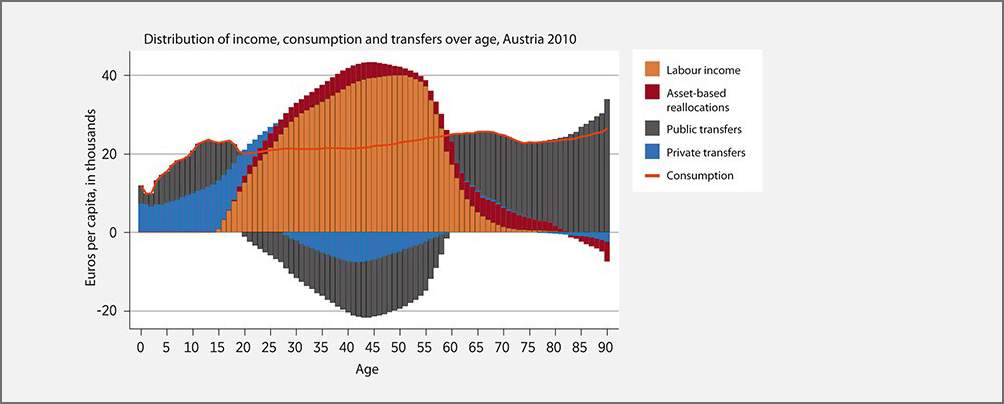Population Economics

Within this research area, we are exploring the economic determinants and consequences of changes in population structure and dynamics. Any analysis of the interaction between economic and population development is necessarily of a crosscutting nature, covering aspects of both human capital creation and human capital depletion at both the micro and the macro level. We carry out research into these complex processes using advanced methods drawn from several disciplines.
Our research agenda includes
1) the economic analysis of life-cycle behaviour with a particular focus on investments in health and education as forms of human capital,
2) the analysis of intergenerational transfers in the context of National Transfer Accounts,
3) macro-economic modelling of health and education under population change,
4) the impact of social interactions on demographic behaviour, especially fertility and retirement,
5) and the theoretical and empirical analysis of population processes and structures, such as the dynamics of union formation and fertility.
Key Concepts / Questions
1. Life-cycle models with endogenous health and education
a) According to which incentives do people invest in their human capital over their life-cycle, and is the outcome efficient?
b) How does individual behaviour toward health and education depend on the socio-economic environment, and how can it be shaped by policies toward better outcomes?
c) How do individuals respond to large shocks to health (e.g. life-threatening diseases, serious accidents) and what preventive efforts do they take?
2. Developing National Transfer Accounts (NTA) and applying them to population economic analysis
a) How does the allocation of income and consumption over the life-cycle vary internationally and across different social-strata, and what is the resulting pattern of intergenerational transfers?
b) How can NTA data be used to predict the sustainability of social security?
3. Macro-economic models of overlapping generations
a) How do medical change, health expenditure and population ageing interact, what are the implications for the sustainability of the health care system, and what policy reforms may be required?
b) What is the role of gender-specific health and education for economic development?
c) How do labour supply and economic dependency measures respond to population change?
4. Agent-based modelling of socio-economic interaction
a) How do family policies and social norms about gender roles shape fertility outcomes?
b) What policies are needed in the presence of social norms about retirement age?
c) How can ABM models be calibrated and approximated?
5. Population processes and structures
a) How have the dynamics of union formation and childbearing evolved over time and across different countries?
b) How many people aged 65 and over have ever lived?
c) What are the implications of an increased influx of forced and voluntary migrants on the Austrian labor market?
The Wittgenstein Centre aspires to be a world leader in the advancement of demographic methods and their application to the analysis of human capital and population dynamics. In assessing the effects of these forces on long-term human well-being, we combine scientific excellence in a multidisciplinary context with relevance to a global audience. It is a collaboration among the Austrian Academy of Sciences (ÖAW), the International Institute for Applied Systems Analysis (IIASA) and the University of Vienna.
